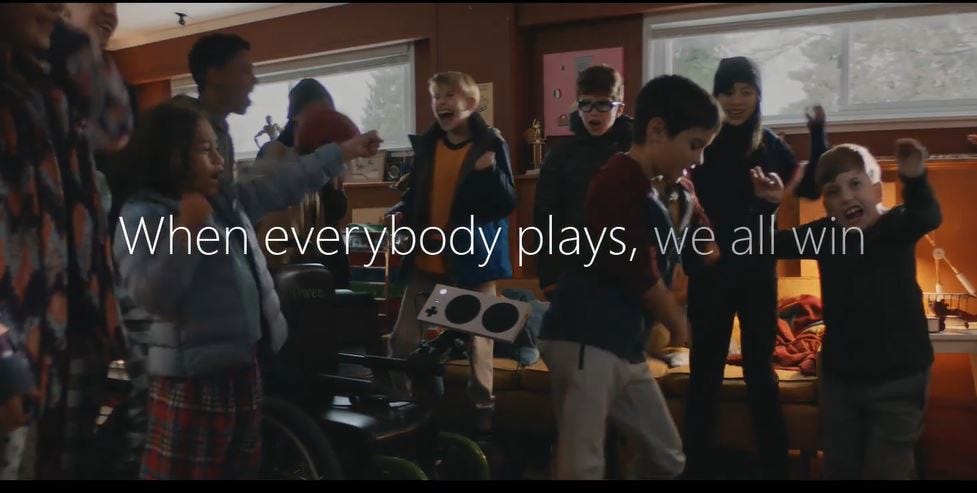Readers of CAMUS would not be surprised to read once again about the imperative of activating brand purpose in the real world. There has been plenty of ink devoted to this topic. As purpose marketing becomes increasingly appropriated as a key component to a brand’s positioning in culture, it must be complemented with experiential marketing to actualize itself in culture. And on the flipside of this statement is another: experiential marketing activations must become more meaningful, or in other words, have a deeper purpose than just a fun or memorable experience. A very recent study from Razorship and Vice Media points to this imperative.
According to the study – one of innumerable studies that purport the unequivocable consumer hunger for brands to have more purpose – 82 percent of consumers make purchase decisions with purpose in mind, yet brands struggle to put purpose into practice. The authors of the study make the point even clearer: “Most brands have jumped on the purpose bandwagon, but few actively drive it forward. We’re at the peak of purpose washing, and it’s imperative that brands not only clearly communicate their purpose but authentically put it into practice in everything they do."
Brands are beyond the ‘why’ and are struggling with the ‘how’ to follow through and tie purpose to performance.”
Though consumers value brands with purpose, they are also more attuned to purpose washing. There is a growing disenchantment with TV commercials and CEO statements around a brand’s purpose, with all age groups (not just the so-called Gen Z cynics) that want to see action over words. Increasingly, they want to see the outcomes of a brand’s purpose in the real world. The Razorfish study points to the fact that consumer actively seek out information about a brand’s purpose: 63 percent of consumers look to a brand’s website to gauge its purpose credentials and 56 percent find it on social media where people are talking about it. Only 51 percent of respondents think that a brand’s advertising gives them a real picture of a brand’s purpose.
In fact, purpose-based advertising seems to work best when it comes to boosting supplier and investor relations and employee satisfaction. But a recent IPA study in the UK suggests that purpose-based advertising isn’t as effective as strong “rational” advertising instead. “On average, brand purpose campaigns generate 1.1 very large business effects, whereas those without a purpose generate 1.6. That’s a 45% variance in performance in favor of those brands not harnessing a purpose.”
It is the medium that is in trouble here. Brand purpose advertising – television spots, mostly – don’t move the needle. So if people are demanding more and more purpose out of the brands that they seek out, and these brands keep flailing at ineffective advertising, then new mediums for brand purpose must be adopted.
I posit that real-world experiences are the answer. More precisely, the best way that a brand’s purpose can be explained is by activating it in the real-world. Sometimes, the productization of a company's purpose is probably the best way to actualize "purpose marketing." Then the advertising created around that “product” becomes the supporting medium for the purpose itself. It’s action followed by words, and not the other way around.
Take for instance Microsoft’s “Changing the Game” advert from 2019 that explained the company’s work in creating an adaptive gaming controller for people with physical disabilities. It is a Global Best of the Best Award winner at the Effies. It works because Microsoft decided to do something purposeful first, and only then talked about it.
When COVID first hit this country, Google lent its homepages and other big soapboxes to help spread the Centers for Disease Control and Prevention’s “Do the Five” quarantine educational campaign. And when Covid-19 vaccinations reached widespread availability in March of this year, the brand created a poignant spot called “Get Back to What You Love,” which celebrated the return to a modicum of normalcy while simultaneously encouraging vaccination.
Like Microsoft, purpose was paired with product innovation first, not advertisements of the largesse of donations or platitudes of support.
When the Black Lives Matter movement took hold, Google rolled out a feature that highlighted Black- and Latinx-owned businesses across its maps tool and search results. Yelp also created a new tool to allow businesses on the platform to identify themselves as black-owned. In other words, the brand productized their purpose of inclusion and diversity. A simple button in their app became their purpose “how” in the moment of cultural relevancy.
I’ve long pointed to the need for experiential campaigns to become a lot more local. We wrote that “a focus on local and community will help the experiential marketing industry move from old days of mass activations to the new ways of targeted, intentional and locally- minded campaigns and events.
A majority of brand activation budgets are devoted to national campaigns with local activations in the supporting cast. This strategy should be reversed: brand activations should be local in nature and the emanative insights and ideas should be amplified on a national scale.
This theory is being proven out through a purpose lens. According to the aforementioned Razorfish/Vice Media study, 40 percent of respondents stated that buying local food/drinks became more important to them during the pandemic, while 7 in 10 respondents agreed that it’s important/extremely important for brands to give back to their local community.
So in other words, activating your purpose locally is a great way to make it more tangible, accessible and actual. Proximity of purpose impacts the power of purpose.
Purposeful business creates profitable solutions for problems experienced by people and the planet (and doesn’t profit from the creation of problems). These solutions are best served as experiences in the real-world and as products we can all use in our communities.


